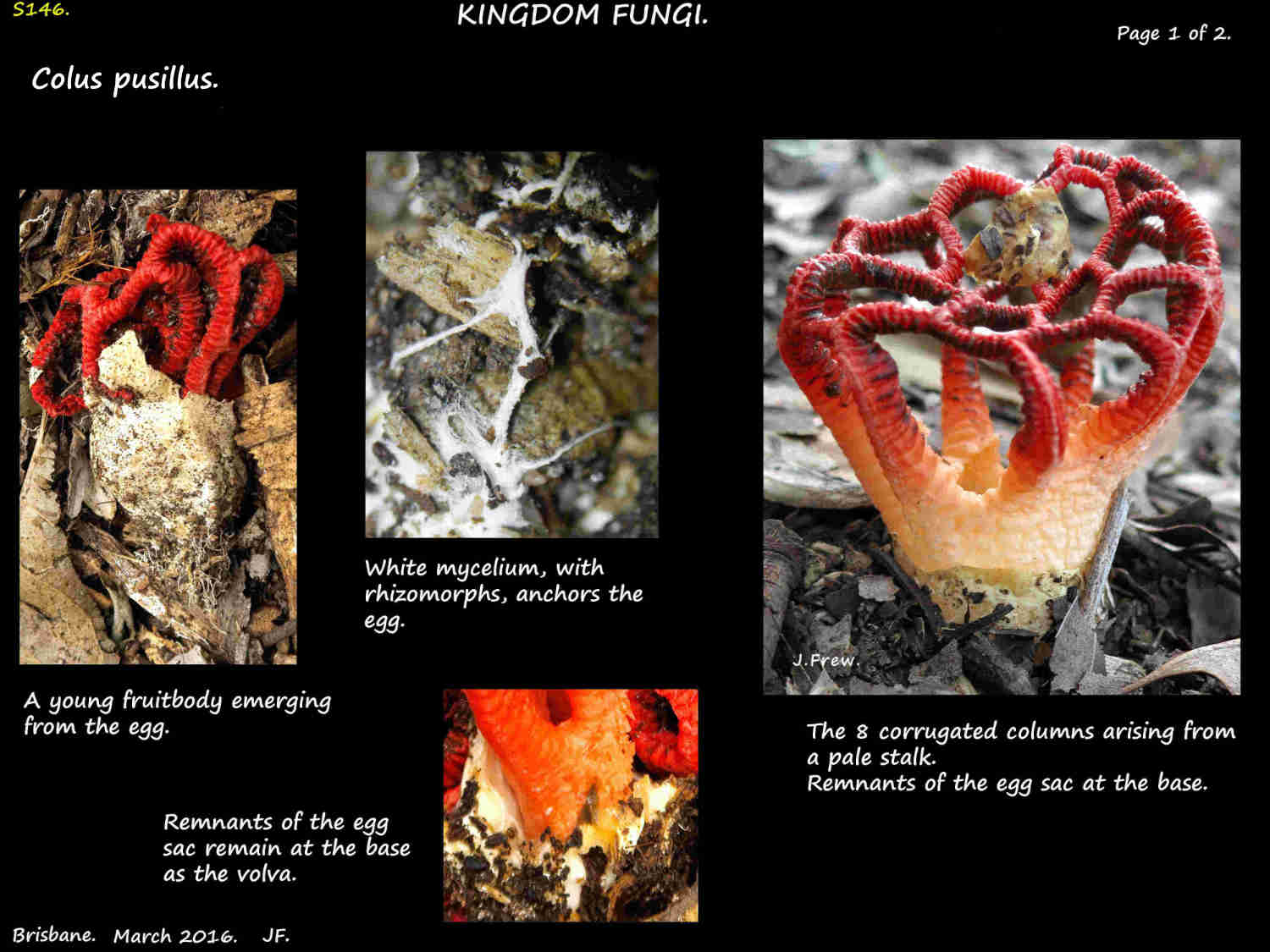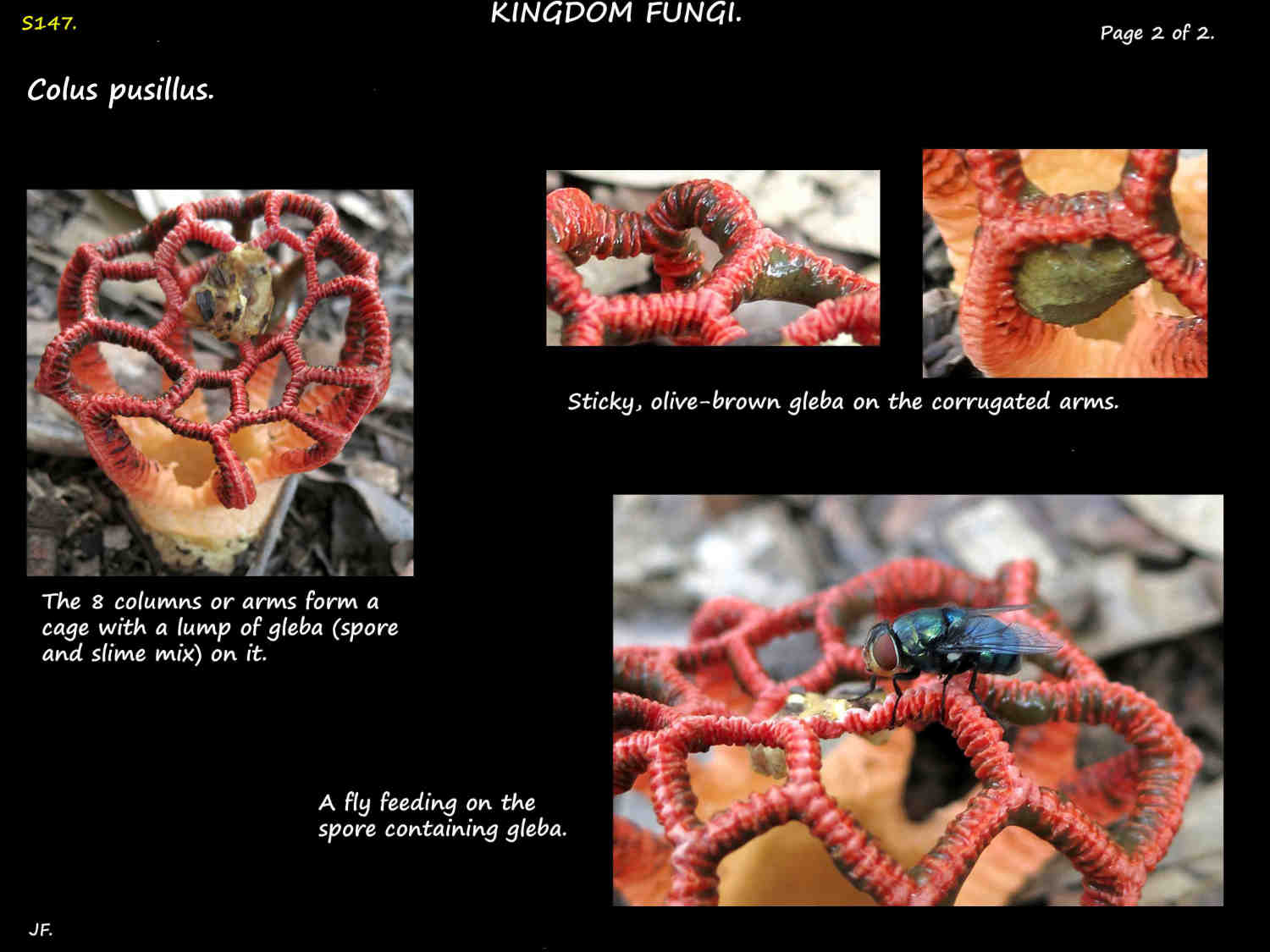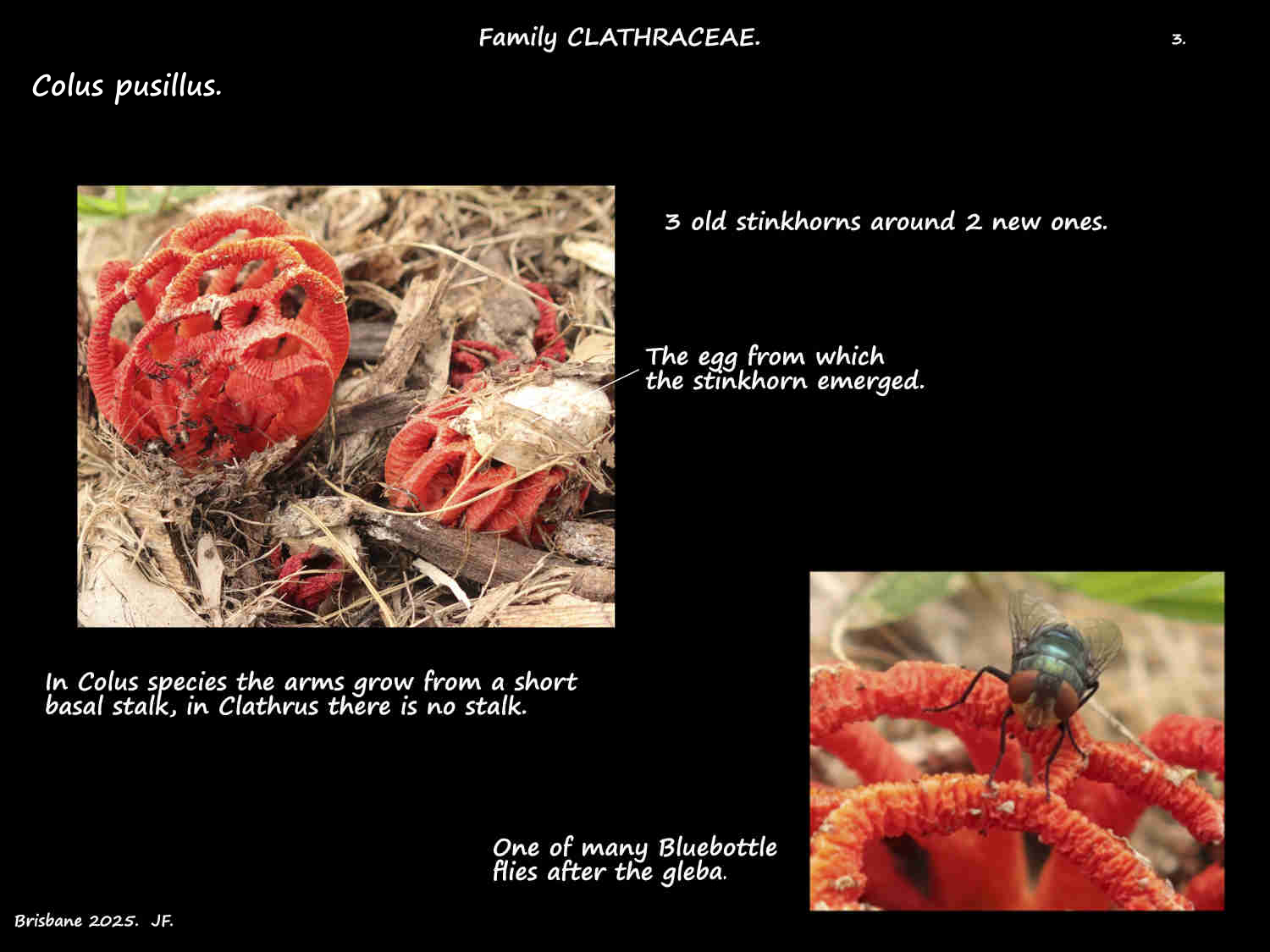Kingdom Fungi > Basidiomycota > Agaricomycetes > Order Phallales > Family Phallaceae.
Synonyms include Clathrus pusillus, Clathrella pusilla, Colus muelleri and Clathrus higginsii.
There are 4 Colus species.
A fairly common stinkhorn found in Australia it is one of the basket or cage fungi.
A spore deposited in leaf litter or mulch develops into an off-white egg 1 to 2 cm long.
White rhizomorphs (bundles of hyphae) anchor it to the mycelium.
Emerging from the egg the fruiting body grows rapidly up to 10 cm high and almost as wide.
The fruiting body or receptacle consists of a stalk and a roundish lattice-like body.
The white to pale pink stalk, around 1.5 cm long is often hidden in the mulch or leaf litter.
From the stalk 6 to 8 arms grow up, branch and rejoin to form the cage (the clathra).
The arms are bright red, corrugated and hollow.
Spores are in the blobs of stinking olive green to brown gleba on the inner surface of the cage.
The spores are formed on the inner surface of the arms.
Flies, attractted by the smell get gleba on their feet and transfer the spores to another Colus.
The clathra collapses within 24 hours and the whole structure disappears in a few days.
(In Clathrus species, not found in Australia the arms arise directly from the base, not a stem.)
J.F.




